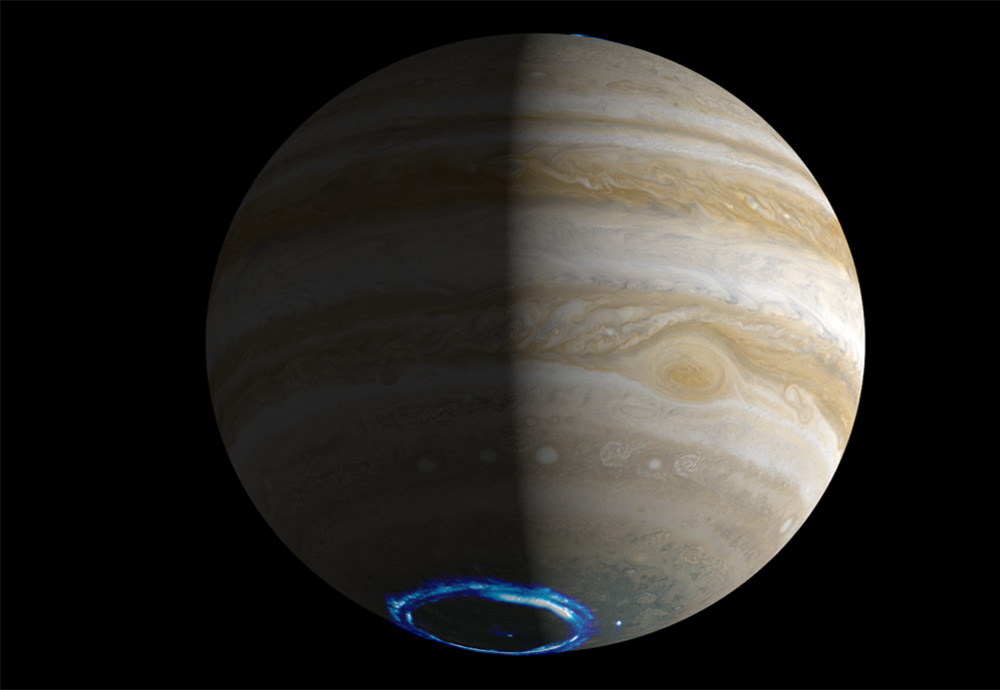Scientists used data from the Juno probe to study Jupiter’s magnetosphere. They continue to argue about whether it is similar to Earth’s or not. A new study supports the second assumption.

Exploring space weather
Recently, scientists published a paper in the journal AGU Advances, in which they traced the connection between Jupiter’s magnetosphere and space weather near it. They are convinced that these findings will help to better understand not only the giant planet itself, but also the Earth.
Space weather is a disturbance in the Earth’s magnetosphere caused by the interaction between the solar wind and its magnetic field. They are usually associated with solar storms and coronal mass ejections of the Sun, which can lead to magnetic fluctuations and outages in power grids, pipelines and communication systems.
Jupiter’s Magnetosphere
Research by scientists shows that the largest planet in the Solar System has a magnetosphere, which consists of mostly closed magnetic field lines in its polar regions, but includes a crescent-shaped area of open field lines.
The magnetosphere is a shield protecting the planet from excessive solar radiation. It works by attracting charged particles to the lines of force of the magnetic field. But these lines themselves can be located in different ways, and there have been disputes about how they behave on Jupiter for several decades.
An open magnetosphere means that the planet has several open magnetic field lines at its poles. This creates regions on Jupiter where the solar wind, which carries some of the magnetic field lines of our luminary, directly interacts with the ionosphere and atmosphere of the planet.
Solar particles moving towards the planet along the lines of an open field do not cause auroras, which mainly occur along the lines of a closed field. However, the energy and momentum of solar wind particles on open power lines are transmitted to a closed system.
Discussion on the openness of Jupiter’s magnetosphere
To study Jupiter’s magnetosphere, scientists have launched various models using data obtained by NASA’s Juno spacecraft, which entered Jupiter’s orbit in 2016 and has an elliptical polar orbit.
“We never had data from the polar regions, so Juno has been transformative in terms of the planet’s auroral physics and helping further the discussion about its magnetic field lines,” said Peter Delamere, one of the authors of the study.
The discussion began after the 1979 flybys of Jupiter by NASA’s Voyager-1 and Voyager-2 spacecraft. These data have led many to believe that the planet has a generally open magnetosphere at the poles. Other scientists have argued that Jupiter’s polar activity, which differs significantly from Earth’s, indicates that the planet has a mostly closed magnetosphere at the poles.
In 2021, Delamere was a co-author of a paper by Binzheng Zhang from the University of Hong Kong, which, using modeling, suggested that Jupiter’s magnetosphere had two regions of open magnetic field lines at the poles.
The model shows one set of open field lines coming out of the poles and stretching outward behind the planet in the magnetic tail, a narrow teardrop-shaped part of the magnetosphere directed away from the Sun. Another set comes out of the poles of Jupiter and flies apart into space under the influence of the solar wind.
According to phys.org
Follow us on Twitter to get the most interesting space news in time
https://twitter.com/ust_magazine


